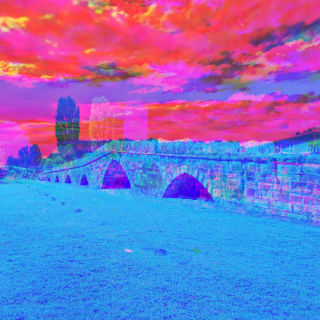At least 130,000 people lost their lives in the wars following the breakup of the former Yugoslavia. The fates of at least 13,000 individuals remain unknown.
The majority of them disappeared in the war in Bosnia and Herzegovina – around 10,000 persons.
As of today, the Republic of Croatia is searching for the mortal remains of 930 of its nationals, and holds Serbian institutions and the high command of the former JNA responsible for their disappearance and the subsequent cover-up.
At the same time, most Serbian families whose loved ones were killed or went missing in connection with the war in Croatia now reside in Serbia, and the state has taken it upon itself to represent them internationally and in bilateral relations with Croatia, with the demand to learn the fates of the remaining 680 missing Serbs, and to have the exhumation and identification process expedited.
The Republic of Serbia is also seeking to locate the mortal remains of 536 of its nationals who disappeared in connection with the war in Kosovo (417 ethnic Serbs, 83 individuals of Roma, Ashkali and Balkan-Egyptian ethnicities, 23 Bosniaks and 13 individuals of other ethnicities), as well as of 31 Montenegro nationals, whose mortal remains are also being sought separately by the Republic of Montenegro. In addition, Serbia and Montenegro are searching jointly for the mortal remains of 142 nationals of the former SRJ who went missing between 1991 and 1995 in connection with the wars in Croatia and B&H.
The data on missing SRJ nationals confirm that the fates of a total of 142 individuals believed to have disappeared in connection with the war have yet to be established – 39 members of the JNA/VJ, 11 members of the Army of Srpska Krajina, 4 members of the Serbian Army, 1 member of the Croatian Army, 30 civilians and 57 individuals whose nationality (Serbian or Montenegrin) has not yet been determined. 51 of them went missing in Croatia, 79 in B&H and 12 in Serbia or Montenegro. 39 of these individuals disappeared in 1991 (including at least 10 in Vukovar and 6 in Osjek), 61 in 1992 (including at least 12 in Sarajevo and 4 in Mostar), 28 in 1995 (including at least 9 in Srebrenica), while the remaining 14 disappeared during 1993 and 1994. Their bodies have yet to be located. Most of them were aged between 19 and 50 when they disappeared, with only three aged 60 or older.
According to the HLC and HLCK records [contained in the Kosovo Memory Book Database – KMBDB], the fates of a total of 1,697 individuals who disappeared in connection with the war in Kosovo remain unknown – 1,130 ethnic Albanians, 417 Serbs, 31 Montenegrins, 23 Bosniaks, 83 individuals of Roma, Ashkali or Balkan-Egyptian ethnicity, and 13 individuals of other ethnicities. This figure exceeds the number of missing persons on the ICRC’s list, compiled by using the missing person reports filed by the families. On May 16th, 2016, the HLC and HLCK provided the ICRC with records of 12 missing persons not on its list, in order for the ICRC Tracing Service to contact their families and include them in future search efforts.
Records in the KMBDB also show that 558 of these individuals were aged between 31 and 50 when they disappeared (350 Albanians, 137 Serbs, 23 Roma, Ashkalis and Balkan-Egyptians, 8 Montenegrins, 7 Bosniaks and 4 individuals of other ethnicities), and that 39 were minors aged 15 or younger, which is particularly disturbing. 33 of them were ethnic Albanians, along with four Serbs and two Roma. There are also large numbers of missing persons aged between 15 and 18. Another disturbing fact is that a total of 466 individuals were aged between 50 and 60, and that 251 were 60 or older.
By municipality, the majority of the missing in Kosovo disappeared in Đakovica/ Gjakovë (143 Albanians, 42 Serbs, 13 Roma and 8 others), but there were quite a few disappearances in other municipalities as well: Peć/Pejë – 100 Albanians, 37 Serbs and 26 others; Glogovac/Gllogoc – 32 Albanians and 11 Serbs; Suva Reka/Suhareka – 138; Orahovac/Rahovec – 137; Srbica/Skënderaj – 100; Dečani/Deçan – 97; Priština/Prishtinë – 96; Gnjilane/Gjilan – 29; etc.
There were six times as many disappearances in 1999 as there were in 1998 and 2000 combined – a total of 1,441 in 1999 alone, compared with 235 in 1998 and 21 in 2000.
Finally, out of the total, only 133 were combatants: 16 members of the Serbian MUP, 26 members of the VJ and 91 members of the KLA.
The HLC and HLC Kosovo, along with the entire RECOM Coalition and all its members, call on the governments of post-Yugoslav states to put an end to the silence surrounding secret mass graves and the fates of the missing, and publicly disclose information about their whereabouts. The families of the missing and the whole society need the memory of those who disappeared to become part of the collective remembrance of the past. The fact that there are no bodies robs them of a physical symbol of remembrance. The families must be allowed to bury their loved ones with dignity, to mark their graves and lay flowers in their memory.
30.08.2016.




